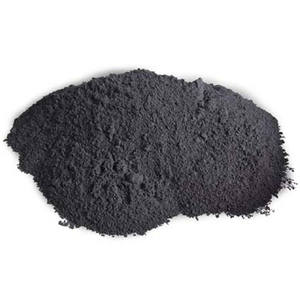Overview of High Capacity Battery Anode Silicon Based Graphite Material
Silicon anode material is a high-capacity alternative to traditional graphite anodes in lithium-ion batteries. Silicon, with its significantly higher theoretical specific capacity (about 4200 mAh/g compared to graphite's 372 mAh/g), promises to dramatically increase the energy density of batteries. This feature has made silicon anodes a focal point of research and development for next-generation batteries, particularly in applications requiring extended battery life or reduced weight, such as electric vehicles (EVs) and portable electronics.
Features of High Capacity Battery Anode Silicon Based Graphite Material
High Lithium-Ion Capacity: Silicon can store much more lithium than graphite, theoretically resulting in substantial improvements in battery energy density.
Abundance and Sustainability: Silicon is the second most abundant element in the Earth's crust, making it a readily available and sustainable option for battery production.
Low Reduction Potential: Facilitates efficient lithium insertion during battery charging.
Non-Toxic: Unlike some other high-capacity materials, silicon is non-toxic and environmentally friendly.
Challenges with Volume Expansion: Silicon experiences a volumetric expansion of up to 400% upon lithium absorption, leading to mechanical stress and potential electrode degradation.

(High Capacity Battery Anode Silicon Based Graphite Material)
The high capacity battery anode silicon-based graphite material parameters can vary depending on the specific application and requirements of the battery. However, some general parameters that can be considered include: * Electrolyte concentration: The concentration of the electrolyte used in the battery will affect its overall performance, particularly its rate of charge and discharge. * Temperature coefficient of resistance (TCR): This parameter represents how quickly the resistance of the battery decreases with increasing temperature. A low TCR means that the battery will operate more efficiently at higher temperatures. * Electron mobility: This parameter measures the ability of electrons to move through the material. A higher electron mobility indicates better performance for the battery. * Surface area: The larger the surface area of the electrode materials, the faster they will conduct electricity. This is important for ensuring that the electrodes can store enough energy to power the battery. * Chemical stability: The chemical stability of the electrode materials will also affect their performance. Materials that are prone to degradation or breakdown may not perform well over time. These are just a few examples of the many factors that can impact the high capacity battery anode silicon-based graphite material parameters. It's important to carefully consider these factors when designing and manufacturing batteries for different applications.

(High Capacity Battery Anode Silicon Based Graphite Material)
Electric Vehicles (EVs): Silicon anodes can significantly extend EV driving ranges by increasing battery energy density.
Consumer Electronics: Enhance battery life in smartphones, laptops, and wearables, enabling thinner devices or longer usage times.
Energy Storage Systems (ESS): Improve grid-scale energy storage efficiency and duration for renewable energy sources like solar and wind.
Aerospace: Enable lighter and more powerful batteries for unmanned aerial vehicles (UAVs) and satellites.
Graphite-Corp is a trusted global chemical material supplier & manufacturer with over 12-year-experience in providing super high-quality graphite powder and graphene products.
The company has a professional technical department and Quality Supervision Department, a well-equipped laboratory, and equipped with advanced testing equipment and after-sales customer service center.
If you are looking for high-quality graphite powder and relative products, please feel free to contact us or click on the needed products to send an inquiry.
L/C, T/T, Western Union, Paypal, Credit Card etc.
It could be shipped by sea, by air, or by reveal ASAP as soon as repayment receipt.
FAQs of High Capacity Battery Anode Silicon Based Graphite Material
Q: Why isn't silicon already widely used in commercial batteries if it has such high capacity? A: Silicon's massive volume expansion during charging leads to electrode degradation and reduced cycle life. Researchers are working on overcoming this issue through material engineering and design innovations.
Q: How do researchers address the issue of silicon's volume expansion? A: Strategies include using nanostructured silicon, creating silicon composites with carbon or other materials, and designing porous structures to accommodate expansion.
Q: Is High Capacity Battery Anode Silicon Based Graphite Material more expensive than graphite ones? A: Pure silicon is cheaper than graphite, but the processing and engineering required to make it viable as an anode material can increase costs. However, improvements in manufacturing processes are expected to lower costs over time.
Q: Does High Capacity Battery Anode Silicon Based Graphite Material affect battery charging time? A: Silicon anodes alone do not inherently affect charging speed, but battery design and the choice of other components can influence charging rates.
Q: What is the current status of silicon anode technology in commercial batteries? A: Some manufacturers are already incorporating silicon into graphite anodes in a blended form to enhance capacity modestly, while others are developing pure silicon or silicon composite anodes for high-end applications. However, widespread commercialization of pure silicon anodes is still in progress as researchers work to improve cycle life and manufacturability.

(High Capacity Battery Anode Silicon Based Graphite Material)
Copyright © 2024 By Graphite-Corp